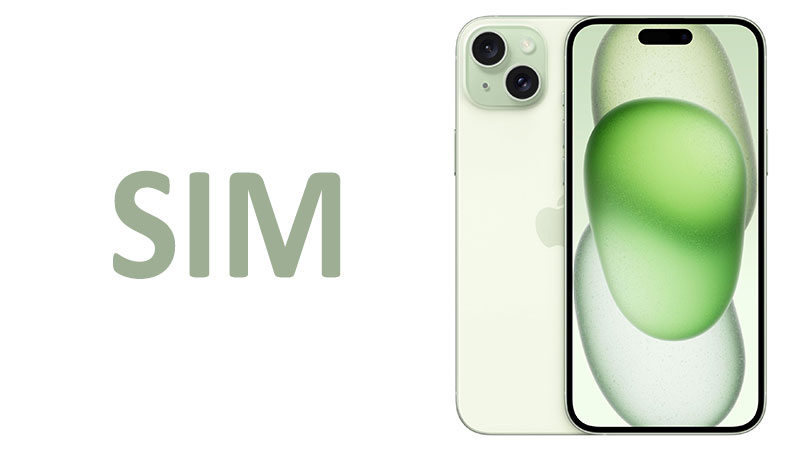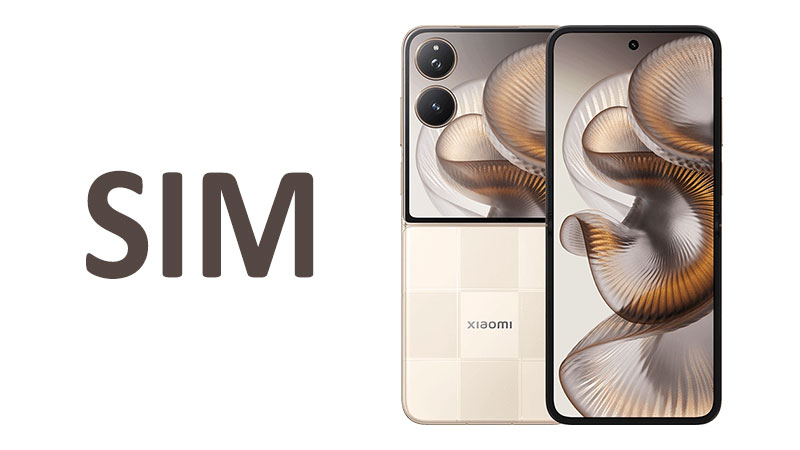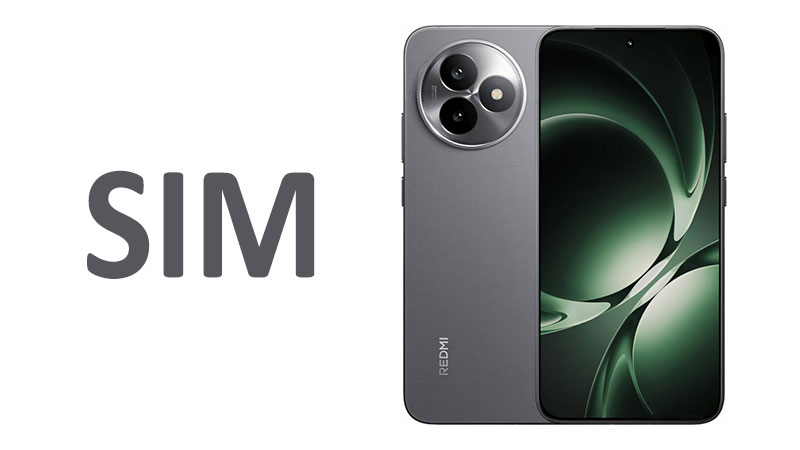The Apple iPhone 15 Plus SIM configuration marks a significant milestone. It confirms Apple’s aggressive transition toward embedded SIM technology. This thorough review explores the iPhone 15 Plus’s connectivity suite. We will examine the regional SIM variations in detail. We also look at the robust 5G support and the new USB-C port. Understanding these features helps buyers make informed purchasing decisions. Connectivity defines the modern mobile experience. Therefore, these specifications are crucially important. This guide provides a comprehensive look at the powerful infrastructure within the iPhone 15 Plus.
The Shift to eSIM: Dual-SIM Functionality
The embedded SIM, or eSIM, technology is a core feature of the Apple iPhone 15 Plus. An eSIM is a digital SIM card. It allows users to activate a cellular plan from a carrier without needing a physical nano-SIM card. This brings several practical and security benefits to users. The iPhone 15 Plus leverages this technology for its dual-SIM capabilities.
eSIM Technology Advantages
eSIM offers immediate activation. Users can switch carriers or plans instantly from their device settings. This eliminates the need to visit a physical store for a new card. It also improves device security. If a phone is lost or stolen, the digital SIM cannot be physically removed. The thief cannot easily disconnect the device from the network.
The iPhone 15 Plus supports multiple stored eSIM profiles. Users can install eight or more eSIM profiles on the device. However, they can use a maximum of two lines simultaneously. This is the definition of the phone’s powerful dual-SIM functionality. A user might run one line for work and another for personal calls. Alternatively, they can use one line for voice and the second for data.
Specialized Comparison: eSIM vs. Physical SIM
The iPhone 15 Plus, like its predecessor the iPhone 14 Plus, champions the eSIM standard. The main difference involves physical space. Removing the SIM tray frees up internal space. Apple can use this space for other components or improved battery size.
Physical SIMs are prone to damage and loss. They also create a small security vulnerability. eSIMs eliminate these issues. However, physical SIMs still offer wider compatibility in some developing markets. Not all small or regional carriers worldwide currently support eSIM activation. This is a point potential buyers must consider.
Pros and Cons of eSIM on iPhone 15 Plus
eSIM offers fantastic convenience. It simplifies the setup of new cellular plans. It improves security against theft. It makes managing dual lines easier, especially for global travelers.
The drawbacks are minimal but notable. Some carriers worldwide do not yet support the technology. Transferring an eSIM between devices sometimes requires carrier support. This process can occasionally be complex or slow. The dependence on digital activation requires an internet connection.
Important Buyer Note: The eSIM Reality
Buyers in the United States must understand the reality of the eSIM-only design. US models of the iPhone 15 Plus lack a physical SIM tray entirely. Users must rely exclusively on eSIM technology. Travelers from the US to other countries might face challenges. They must ensure their destination carrier supports eSIM for travelers. Planning international connectivity requires careful pre-arrangement.
Regional SIM Configurations and Global Travel
The Apple iPhone 15 Plus SIM setup varies significantly by region. This division caters to different market regulations and carrier infrastructure needs. Understanding these regional differences is critical for international purchasers and travelers.
International Model (Global Standard)
Most markets outside the US, including Europe, Australia, and parts of Asia, receive the International model. This version supports a flexible dual-SIM configuration. It allows for one nano-SIM and one eSIM to be active concurrently. Users can also utilize two eSIMs simultaneously if preferred.
This configuration offers the best of both worlds. It provides the convenience and security of eSIM technology. It retains the flexibility of a physical nano-SIM slot. This is useful for users whose primary carrier uses an older physical SIM card. It also helps travelers who purchase local prepaid physical SIMs abroad. They can keep their home number active via eSIM while using the physical SIM for local data.
USA Model (eSIM Exclusive)
The iPhone 15 Plus sold in the United States is strictly eSIM-only. It has no physical SIM tray. This choice pushes the US market fully toward digital connectivity. US users benefit from enhanced security and simpler carrier switching within the country.
The US model allows for eight or more eSIM profiles to be stored. Users can run two eSIM lines simultaneously. This feature is powerful for managing separate phone numbers efficiently. The primary challenge remains international travel. US buyers must plan their travel data with worldwide eSIM providers. This requires research into coverage and pricing.
China Mainland Model (Physical Dual-SIM)
The model sold in mainland China features a unique configuration. It supports dual physical nano-SIM cards. It does not support eSIM functionality from mainland carriers. This deviation is due to unique local regulatory requirements.
This design serves users who rely on two separate physical phone numbers. It aligns with the local infrastructure and customer preferences in China. It is essential to note that devices purchased in China cannot use eSIM services from China mainland carriers. International buyers seeking this specific physical dual-SIM capability often import the China model.
Cellular Network Compatibility: 5G Dominance
The Apple iPhone 15 Plus boasts comprehensive cellular network support. It covers all major global network standards. This ensures compatibility almost anywhere in the world. The phone supports GSM, CDMA, HSPA, EVDO, LTE, and 5G technologies.
The Power of 5G
The inclusion of 5G connectivity provides significantly faster data speeds. It offers lower latency compared to older 4G LTE networks. This dramatically improves activities like streaming high-resolution video and online gaming. The iPhone 15 Plus supports various 5G bands. This enhances its reliability across different carrier networks globally.
This widespread 5G support is a crucial selling point. It future-proofs the device for years to come. Users can enjoy the fastest available mobile data speeds today. They also benefit from expanding 5G network coverage tomorrow.
Legacy Network Support
The iPhone 15 Plus maintains support for legacy networks. It includes GSM, CDMA, HSPA, and EVDO standards. This backward compatibility is necessary for consistent coverage. The phone seamlessly switches to 4G LTE or even 3G networks in remote areas. This ensures users remain connected even when 5G is unavailable. The broad technological support makes the iPhone 15 Plus a reliable communication tool everywhere.
Specialized Comparison: 5G Evolution
The iPhone 15 Plus carries over the robust 5G architecture from the previous iPhone 14 Plus. Both devices deliver excellent 5G performance. The main focus of the 15 Plus is refinement and greater component integration. Apple continues to use advanced antenna technology. This technology ensures reliable connectivity even in crowded urban environments.
The continuous support for all major frequency bands, including sub-6 GHz, confirms its strong global profile. Users should check which specific 5G bands their local carrier uses. The iPhone 15 Plus likely supports them all.
Wireless Standards: Wi-Fi 6 and Bluetooth 5.3
Connectivity extends beyond cellular networks. The iPhone 15 Plus integrates advanced Wi-Fi and Bluetooth standards. These features enhance local device interaction and data transfer speeds.
Wi-Fi 6 Technology
The iPhone 15 Plus features Wi-Fi 6, also known as 802.11ax. Wi-Fi 6 is a significant upgrade over older Wi-Fi standards. It delivers faster data throughput. More importantly, it handles network traffic more efficiently.
This improved efficiency is noticeable in busy environments. These include crowded offices or public hotspots. Wi-Fi 6 reduces network congestion. It provides a more stable connection for everyone. It also helps manage battery life better. The phone consumes less power while maintaining a high-speed connection. The dual-band support allows connections to both 2.4 GHz and 5 GHz networks. This maximizes both range and speed.
Bluetooth 5.3 Features
The inclusion of Bluetooth 5.3 is a major step forward for wireless accessory connectivity. Bluetooth 5.3 offers several key improvements over earlier versions. These enhancements focus on efficiency, reliability, and security.
The new standard improves energy efficiency. This means connected accessories like AirPods experience longer battery life. Bluetooth 5.3 also features better connection stability. It minimizes interference, resulting in fewer audio dropouts. Furthermore, it enhances security through improved encryption key size control. This protects data transmitted between the iPhone and connected devices. The low-energy (LE) features are crucial. They allow fitness trackers and smartwatches to remain connected for longer periods.
Specialized Comparison: Bluetooth 5.3 vs. 5.0
Bluetooth 5.3 is an evolution from the widely used Bluetooth 5.0. Both offer high speed and long range. However, 5.3 significantly refines the power management and connection quality. It introduces features like Enhanced Periodic Advertising. This reduces redundant data transmission. It conserves battery power for both the phone and the accessory. Users with premium wireless earbuds will appreciate the low-latency, stable connection this technology provides.
Navigation and Near-Field Communication
Accurate positioning and contactless payment capabilities are non-negotiable features in modern smartphones. The iPhone 15 Plus excels in both areas, offering robust global support.
Comprehensive Positioning Systems
The iPhone 15 Plus supports a wide array of global navigation satellite systems (GNSS). These include GPS, GLONASS, GALILEO, BDS (BeiDou), and QZSS (Quasi-Zenith Satellite System). This multi-system support dramatically improves location accuracy. It provides faster satellite lock-on times, especially in dense urban areas.
Navigating through unfamiliar cities becomes more reliable. Location-based services operate more precisely. The combination of multiple satellite constellations reduces reliance on a single system. This results in superior performance for mapping applications and location-based gaming.
NFC for Seamless Payments
The iPhone 15 Plus includes Near-Field Communication (NFC) capability. This enables contactless transactions via Apple Pay. Users can make secure payments with a simple tap of their phone. NFC also supports reader mode functionality. This feature allows the phone to read certain NFC tags, such as those found on transit cards or product labels. The NFC technology is fundamental to the convenience and security of the Apple ecosystem.
USB-C: The Charging and Data Shift
The transition from the proprietary Lightning port to the universal USB Type-C 2.0 port is a defining change for the iPhone 15 Plus. This shift offers universal compatibility with other devices. It simplifies charging for users across the board.
Universal Charging and DisplayPort
The USB-C port brings standardization. This means users can charge their iPhone 15 Plus with the same cable used for MacBooks or iPads. This reduces cable clutter. The port also supports DisplayPort functionality. This allows the iPhone to output video to an external display or monitor. This is a powerful feature for presentations or media consumption. Users can easily mirror their iPhone screen on a large display.
The USB 2.0 Data Speed Caveat
A critical detail for potential buyers is the data transfer speed. The iPhone 15 Plus USB-C port operates at USB 2.0 speeds. This limits the data transfer rate to a maximum of 480 Megabits per second (Mbps). While perfectly adequate for daily charging and minor file transfers, this speed creates a bottleneck for large files.
Transferring large videos, ProRAW photos, or full device backups takes significantly longer. Users accustomed to high-speed data transfer might find this disappointing. This is an important distinction compared to the Pro models.
Specialized Comparison: USB 2.0 vs. USB 3.0
The iPhone 15 Pro and 15 Pro Max models feature USB-C ports that support USB 3.0 speeds. These faster speeds can reach up to 10 Gigabits per second (Gbps). This is approximately 20 times faster than the USB 2.0 speed of the iPhone 15 Plus.
For content creators, the Pro models’ faster USB 3 port is a game-changer. It allows near-instant offloading of massive video files. For the typical iPhone 15 Plus user, the slower USB 2.0 speed is less of an issue. Most users rely on cloud syncing over Wi-Fi, which often negates the need for high-speed wired transfer. However, those who perform frequent local backups must note this limitation.
Radio and Accessory Interface Review
The connectivity profile of the iPhone 15 Plus is built for digital services. It intentionally excludes certain older communication methods.
Radio and Audio Connectivity
The iPhone 15 Plus does not include an integrated FM radio receiver. This has been a standard practice for Apple devices for many generations. Modern users stream audio through cellular data or Wi-Fi. They use apps like Apple Music or Spotify.
The Bluetooth 5.3 implementation handles high-quality audio streaming. It features support for A2DP (Advanced Audio Distribution Profile). This ensures excellent wireless audio fidelity with compatible headphones and speakers. The LE (Low Energy) profile provides efficient connectivity for other accessories.
Comprehensive Review Summary: Buyer Considerations
The connectivity of the Apple iPhone 15 Plus offers a blend of futuristic digital features and proven reliability. The phone’s SIM and connectivity options are robust, catering to most global users while pushing the market toward eSIM adoption.
Key Takeaways for Buyers
Pros include the dual-SIM flexibility, especially in international models. The enhanced security of eSIM is a major advantage. Furthermore, the robust 5G support ensures maximum network speeds worldwide. The upgrade to Bluetooth 5.3 improves accessory performance and battery life. The adoption of USB-C offers universal charging convenience.
Cons mainly revolve around regional differences. US buyers face the eSIM-only reality, requiring advance planning for international travel. The USB-C port is limited to the slower USB 2.0 data transfer rate. This might frustrate users who frequently move large media files.
Overall Connectivity Assessment
The iPhone 15 Plus is a highly connected device. Its comprehensive support for all major cellular bands, including 5G, is excellent. The integration of modern wireless standards like Wi-Fi 6 and Bluetooth 5.3 ensures fast and stable local connectivity. The change to USB-C is a positive step for universality. The regional SIM management options offer necessary flexibility for global consumers. This balance of features makes the iPhone 15 Plus a compelling choice.
Conclusion: Making the Right Connectivity Choice
The Apple iPhone 15 Plus SIM and connectivity setup solidify Apple’s vision for the future of mobile networking. The emphasis on eSIM technology provides significant benefits in security and convenience. This is particularly true for users who manage two lines or travel frequently with prepaid data plans. The device’s support for GSM, CDMA, LTE, and 5G guarantees reliable connection quality globally. The move to USB-C simplifies charging logistics for everyone.
Potential buyers must carefully consider the USB 2.0 speed limitation. They should also evaluate the regional SIM model they purchase. The International model offers the most flexibility with the Nano-SIM slot. The US model provides a pure digital experience. Overall, the iPhone 15 Plus delivers a high-performance and future-proof connectivity suite. It represents an excellent investment for users seeking a powerful and versatile communication device.
Frequently Asked Questions (FAQ)
1. Does the US iPhone 15 Plus still have a physical SIM tray?
No, the Apple iPhone 15 Plus models sold in the United States are eSIM-only. They do not include a physical SIM card tray.
2. Can I use two different phone numbers on the iPhone 15 Plus?
Yes, the iPhone 15 Plus supports Dual-SIM functionality. This allows you to use two active phone numbers simultaneously, typically via two active eSIMs.
3. What is the main difference between the iPhone 15 Plus and Pro USB-C ports?
The iPhone 15 Plus USB-C port is limited to USB 2.0 speeds, offering up to 480 Mbps. The iPhone 15 Pro models support much faster USB 3.0 speeds.
4. Does the iPhone 15 Plus support the newest Wi-Fi standard?
The iPhone 15 Plus supports Wi-Fi 6 (802.11ax). This standard provides faster speeds and improved network efficiency compared to older Wi-Fi versions.
5. Is the iPhone 15 Plus a good choice for international travel?
Yes, the iPhone 15 Plus is excellent for international travel. Users can store multiple travel eSIMs and activate them as needed for local data and connectivity.



